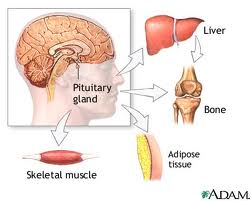Picture this:
You got out of work later than ususal... perfect timing to hit rush hour at its height and extend your normal 20-minute commute to the gym into an all-out 45-minute crawl full of frustration.
By the time you get to the gym, you only have about 25 minutes before you need to leave.
What do you do? Do you literally throw in your towel and just go home? How can you possibly salvage a decent training session out of the train wreck that was the afternoon?
Circuit Training is waiting to save the day! Well, so are Time Turners, but pretty much no one has one of those things...
What is Circuit Training?
The possibilities are limited only by your imagination (and your physical capacity. I know from personal experience that performing box jumps after a barbell sumo deadlift is a baaaaad idea).
Typically, circuits are comprised of 5-8 exercises and you want to work with weights about 75-80% of your max. Translation: pick weights that you could probably perform for 8-10 challenging repetitions. String them all together, and work through the circuit with minimal rest between exercises.
In terms of time, you can set up your circuit a couple of different ways:
1. Set a particular rep goal per exercise and then set your time for 15-25 minutes and see how many rounds of the circuit you can perform.
2. Pick a number of rounds to complete and try to finish as quickly as possible. Usually, if you have about 5-8 exercises, 5 rounds will be around 20-ish minutes.
Benefits of Circuits:
1. They're a great way to improve overall conditioning without watching your hard earned muscle mass wither away. Two recent research reviews (abstracts here and here) have found that steady state cardiovascular training can a) decrease power output (yikes! Not good for athletes that need to produce power aka: everyone) and b) compromise muscle mass (and thus strength) gains. This effect is seen most prominently when aerobic training is 3x/week for greater than 20 minutes. The metabolic pathways that aerobic and anaerobic (think strength training and sprint/interval training) are conflicting. It's very hard to maintain a large amount of muscle mass and be a long-distance runner!
Circuit training is similar, metabolically, to sprint/interval/hill training in that it preserves lean muscle mass.
Steady state cardiovascular training, on the other hand, can lead to elevated levels of cortisol (stress hormone) which can decrease the effectiveness of muscle-building hormones such as testosterone and insulin-like growth. It also encourages muscle protein break down.
While strength training too breaks down muscle tissue, the anabolic (building) environment produced by strength training encourages repair more than the catabolic (break down) environment of aerobic training. Strength coach Charles Poliquin says:
Whereas endurance exercises compromise anaerobic performance and body composition, anaerobic training modes such as sprint intervals and weight lifting will benefit endurance athletes if programed properly. To improve endurance performance, do a strength-type resistance training program with loads of 80 percent of the 1RM or heavier. This will train the type IIA muscle fibers so they increase the rate of force development and get faster.
Type IIA muscle fibers = strong, powerful muscles. We want those!
So if you're still with me, we'll move on to the second point.
2. It's time-efficient. After a quick dynamic warm-up and maybe a warm-up set or two of the planned exercises, the total time of a circuit should be no more than 25-minutes start to finish. 15-minutes would even be sufficient depending on the intensity of the exercise selection and weights used. Nice huh? It's just long enough to make you feel like you've worked out but not too long that you're home late for dinner.
3. (but really 2.5) Not only are they time-efficient but they're efficient in the sense that a circuit can hit a lot of muscle groups, through full ranges of motion, in one fell swoop. While a jog will really only get your legs (and, I would argue, not very well since the range of motion is small, the force production is low, and the intensity isn't that high either) and maybe some low level core activation, a circuit can be full body. Take a look at this sample:
Goblet or barbell squat x 6-8
Pushup x 8-10
Step back lunge x 6-8/side
3 Point Row x 8/side
Kettle bell swing x 10
Can you see the total body genius in that? We have lower body (both bilateral and unilateral movements), upper body (push and pull) and a delightful amount of full range of motion exercises. All of which, if one wanted, could be done with just one kettlebell.
Run through that baby 5 or 6 times and try to tell me that's not cardio. Oh wait, you can't. I can't hear you over your screaming lungs and gasping breaths.
4. Because circuits demand so much from your muscles and cardiovascular system, they're pretty calorically expensive, which means your body will be burning calories longer post-workout than they would after a lower intensity training session (aka: low-intensity, steady state cardio). On those above-linked research reviews, it was found that athletes reduced body fat when they performed high intensity exercise (sprints or circuits).
So, if you're looking for an efficient way to reduce body fat, preserve lean tissue, AND improve your cardiovascular fitness, circuit training is definitely a tool you want in your toolbox!
I feel obligated to note that strength training, solid strength training sessions, need to make up the bulk of your training week. Picking up heavy things repeatedly is the best way to build muscle and get stronger. Circuit training, while it won't make you weaker and can aid with strength gains, is inferior overall to 80-90% max lifting in terms of producing maximal strength gains. While I don't recommend basing your entire training plan around circuits, they are beneficial and even fun (yes, fun.) to throw in every once and a while.



